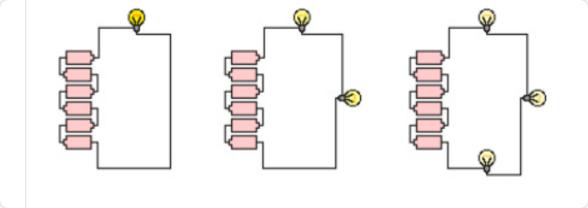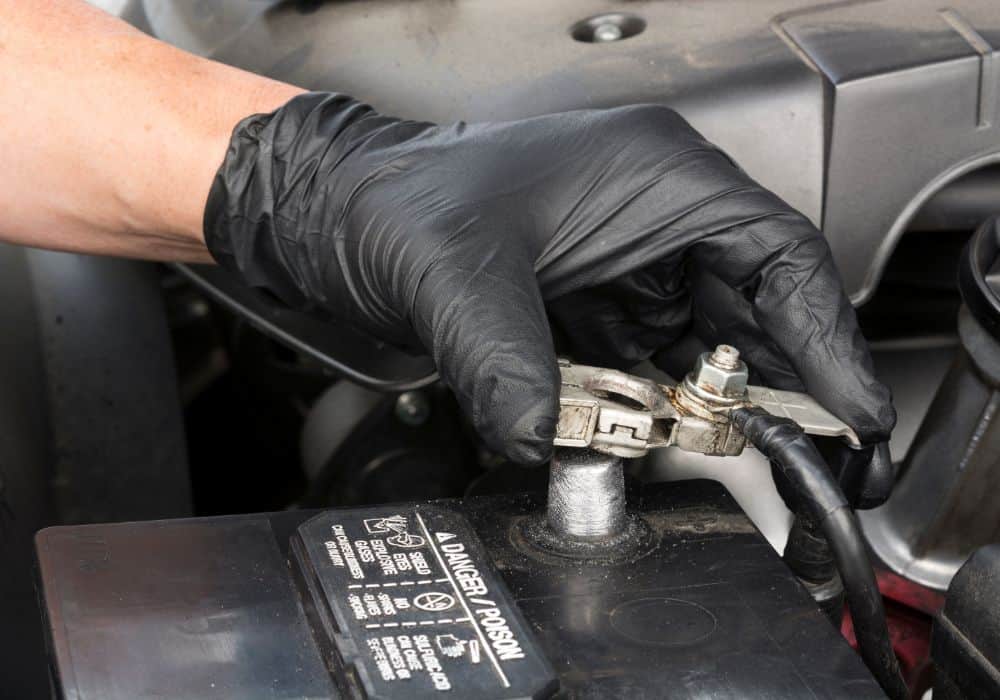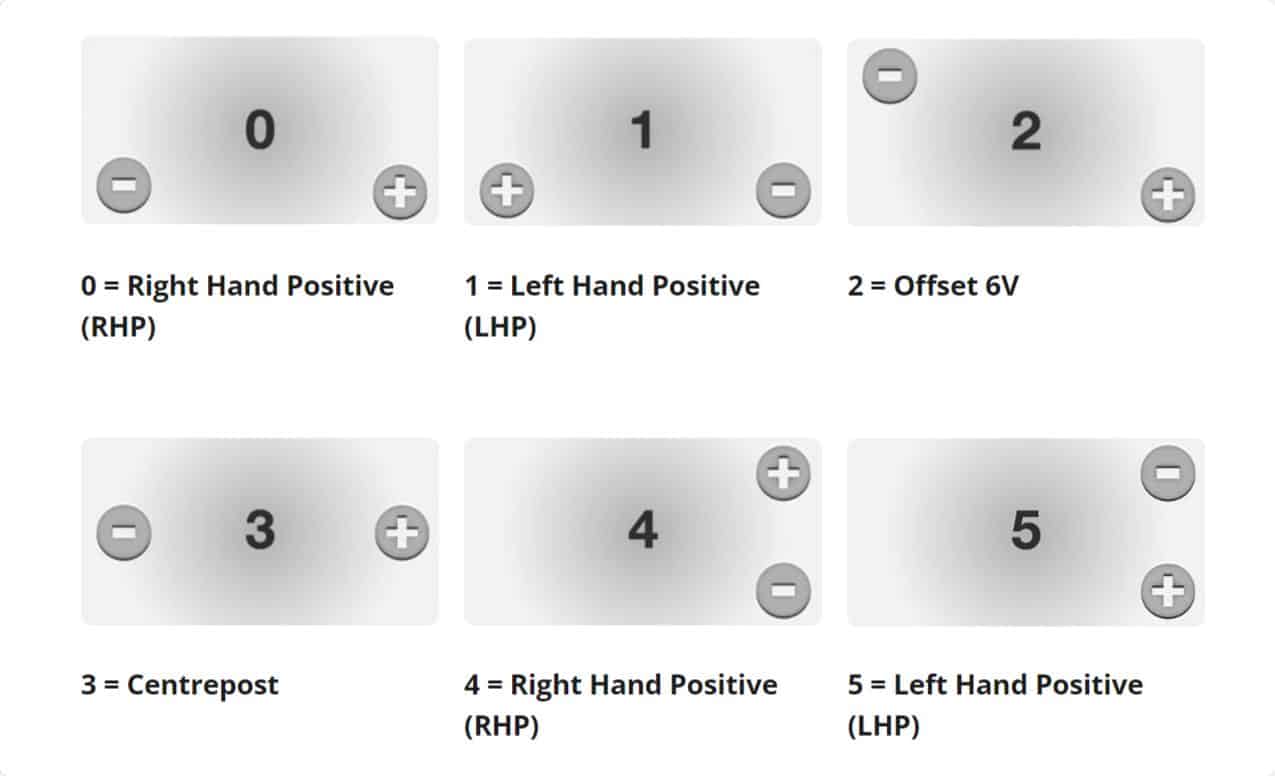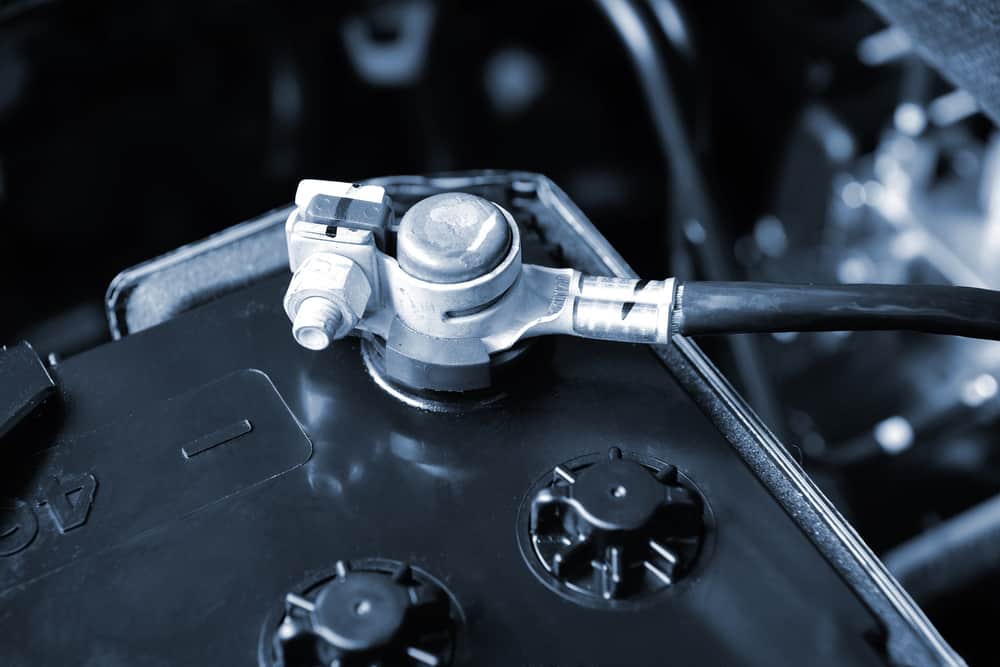A battery has two terminals at its two ends. One of them is positive, and one of them is negative. These two electrical ends connect the battery with either a power source or a device.
That’s a summed-up answer to your question. But in the guide below, we’ll dive deep into what battery terminals are. We’ll explore:
- Structure of a battery terminal
- How do battery terminals work?
- Types of battery terminals
- Answers to common battery terminal confusions
Let’s get started!
Table of Contents
What Are Battery Terminals?
In the electrical world, the term terminal refers to a connector. It connects two circuits, ensuring a smooth current flow between them. Visualize this with the following image:

Notice how the positive terminal of battery A connects to the positive terminal of battery B. Similarly, the negative terminal of battery A connects to the negative clamp of battery B. In this way, battery A is connected to battery B. Similarly, battery B is connected to battery C.
The battery terminals form a connection between all three batteries and enable them to empower a bigger electrical appliance or device. They connect with one another and then an external circuit like this:

*Each bulb in the picture above has a circuit of its own.
You can use battery terminals to form a connection between any number of batteries and any number of circuits.
Consider a remote-controlled car and a Tesla, for example. A remote-controlled car for kids requires about 3-4 single-cell batteries connected to one another. On the contrary, an entire vehicle like Tesla requires 830 cells.
Know that there’s a difference between the type of battery used by each of these.
Before we head to the mechanism of batteries and battery terminals, it’s essential to know that most people generally use the term battery terminals with respect to car batteries.
Although the concept of battery terminals for a car battery and an AA battery you put in your TV remote is the same, the term is more commonly used in the automobile industry.
Structure of a Battery Terminal
Visually, battery terminals are pieces of metal. These pieces may be integrated within the battery structure or connected externally.
Note that batteries, as well as battery terminals, come in a variety of shapes and sizes. Hence, there is no exact visual representation of a battery terminal.
The positive terminal is the cathode, and the color red usually represents it. On the contrary, the negative terminal is the anode, and we can use black or blue to represent it.
Structurally, battery terminal ends are usually made up of lead. The metal exhibits excellent conductivity and resistance to corrosion. Lithium-ion batteries, however, have a graphite anode and any of the following three metals for its cathode:
- Cobalt
- Manganese
- Iron Phosphate
In terms of size, the cathode terminal is slightly larger than the anode terminal. The difference in size has nothing to do with the performance. It only differs to ensure the safety and convenience of the user. If you connect the terminals to the wrong ends of a battery, it might damage the entire circuitry.
How Do Battery Terminals work?

When the positive and negative terminals are connected with an external circuit or device, the electrons flow from the positive terminal into the external circuit. And these electrons return to the battery via the negative terminal. The flow of electrons makes it possible for the externally connected device to function.
With that said, things are a bit different when you connect a battery’s terminals to an electrical power source. Instead of powering another device, the battery regains its charge. It does so as electrons from the power source convert into chemical energy inside the battery and get stored.
Types of Battery Terminals
The two major types of battery terminals are the material of manufacture and terminal layout. Here’s a quick insight into both:
Material
As mentioned earlier, different materials are used to manufacture battery terminals. Before settling for any material, you should assess the mechanical strength, resistance to oxidation, electrical high conductivity, and price.
Terminal Layout
There are about six different types of battery terminal layouts. These include:

Each of these layouts has a different orientation for the positive and negative terminals, which changes the polarity. So, be careful when connecting the battery to electrical devices. In any case, you must never link the positive terminal to the negative terminal directly.
As for automotive battery terminals, there are three prominent types. These include:
- SAE Terminals: These have lead posts with a truncated cone shape.
- JIS Terminals: There’s a prominent difference between the positive and negative terminals of JIS terminals. The positive clamps are larger. But both JIS terminals are smaller than SAE terminals.
- L-Terminals: These have an L-shaped structure. There’s a bolt-hole at the vertical side too.
Amongst these, SAE terminals are the most popular terminal type for automotive cars and motorcycles. JIS type was popular amongst Japanese cars, and L terminals come in handy for light-duty vehicles like snowmobiles.
There’s another type of terminal featuring four posts. These are the marine battery terminals. Two of its posts are SAE terminals, and two are threaded posts.
FAQs
What happens if the battery terminal is loose?
Loose battery terminals can lead to excessive resistance in the current’s path. The battery may not be able to supply the power that the connected electrical system requires, which may lead to the failure of the connected system and a dead battery.
For example, a loose battery terminal can damage the car battery. This electrical problem will cause the failure of audio systems. Sometimes, the navigation system can also be affected.
Do you need to replace a battery terminal?
You’ll need to replace your battery terminal every 50,000 – 100,000 miles. But if you’re using poor-quality battery cables and wires or living in a place with harsh outside temperatures, you might have to replace the terminals much earlier.
Some visual symptoms include corrosion, rust, and damaged parts. If you notice green corrosion and grime going into the lead terminals, know that they are completely gone.
Final Words
By now, we hope you have a clear answer to your question, i.e., what are battery terminals? These are metal contacts that help batteries connect with other electrical devices and do their work. If there’s still anything about battery terminals that confuses you, let us know in the comments below. We’ll get back as soon as possible!
